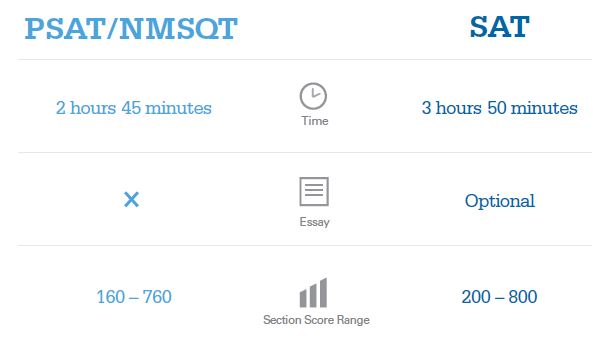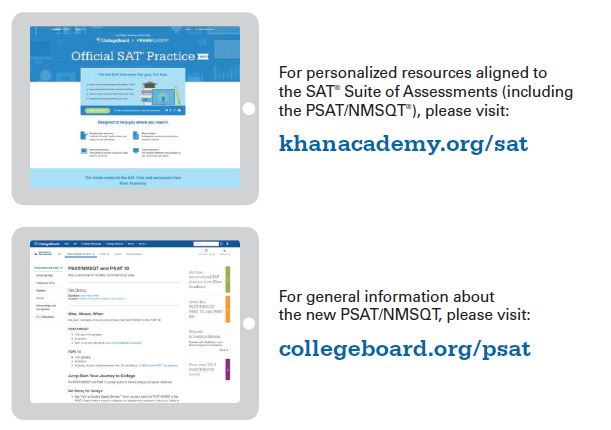Do you graduate in 2017 or after? If so, you’ll be taking the new redesigned PSAT, starting in October 2015, the new PSAT will be given to all juniors across the country. Some 9th-10th graders take this test as well. So what’s new about the PSAT? Let’s dive into the changes being made to the redesigned PSAT.
Changes in Format
The new redesigned PSAT is 35 minutes longer than the old PSAT. It clocks in at 2 hours and 45 minutes, rather than 2 hours and 10 minutes. Instead of 5 multiple choice answers, the new PSAT offers only 4. This means you have a better chance of getting the answer right if you guess!
The following chart breaks down the content, time, and number of questions per section:
The new test is longer than the old PSAT, and the new SAT will be even longer than both, so students need to practice test-taking endurance. Since the test hasn’t been administered yet, there aren’t a lot of official practice tests to take. So far, College Board has only released one official sample PSAT, which you can download to practice and score.
New PSAT Practice Test – Answer Key
The new PSAT also closely resembles the new SAT, which will be administered starting in the March 2016. Except for the fact that the PSAT doesn’t have an essay, the two tests have very similar content, format, and even scoring. Because of these changes and uncertainty in scoring for college admissions, the class of 2017 should prepare for and take the ACT instead of the new SAT.
Changes in Scoring
The redesigned PSAT will be scored on a scaled between 320 and 1520. The Math and Reading/Writing sections will score on a range from 160 to 760. In addition to these section scores, your score report will also tell you subscores for Math, Reading, and Writing and Language between 8 and 38. This will give you a sense of which sections you’re best at and where you need improvement. Unlike the old PSAT, the redesigned PSAT gives no penalties for wrong answers.
The new SAT will return to the 1600 scoring system it had back in the day, before 2005. It will have a maximum composite score of 800 for Math and 800 for Critical Reading and Writing combined. As I mentioned above, your PSAT score is meant to predict your SAT score.
The PSAT scale doesn’t go up to 1600 exactly since the SAT is a more difficult test than the PSAT. While a 1300 on the PSAT suggests you might score around a 1300 on the SAT, a perfect PSAT score doesn’t necessarily guarantee perfection on the SAT. The two scoring scales coincide with one another, but the PSAT is shifted down to account for its differences in difficulty level. Keep this discrepancy in mind when interpreting your PSAT scores from your practice tests and the official test itself.
Because they eliminated the wrong answer penalty, you don’t have to devise a strategy anymore for which questions to guess on and which to leave blank. Give all of them your best guess, even if you are unsure. If you leave any blank, save enough time at the end of each section to bubble in all your answers.
When you’re taking a practice test, make sure to mark which ones are random guesses so you can review them when you’re finished. To make the most out of your practice tests, you want to really analyze why you missed a question and what you need to do – review content, work at a faster pace, etc. – to ace that question type the next time.
Resources:
Related Articles:
Does the PSAT Really Matter?




